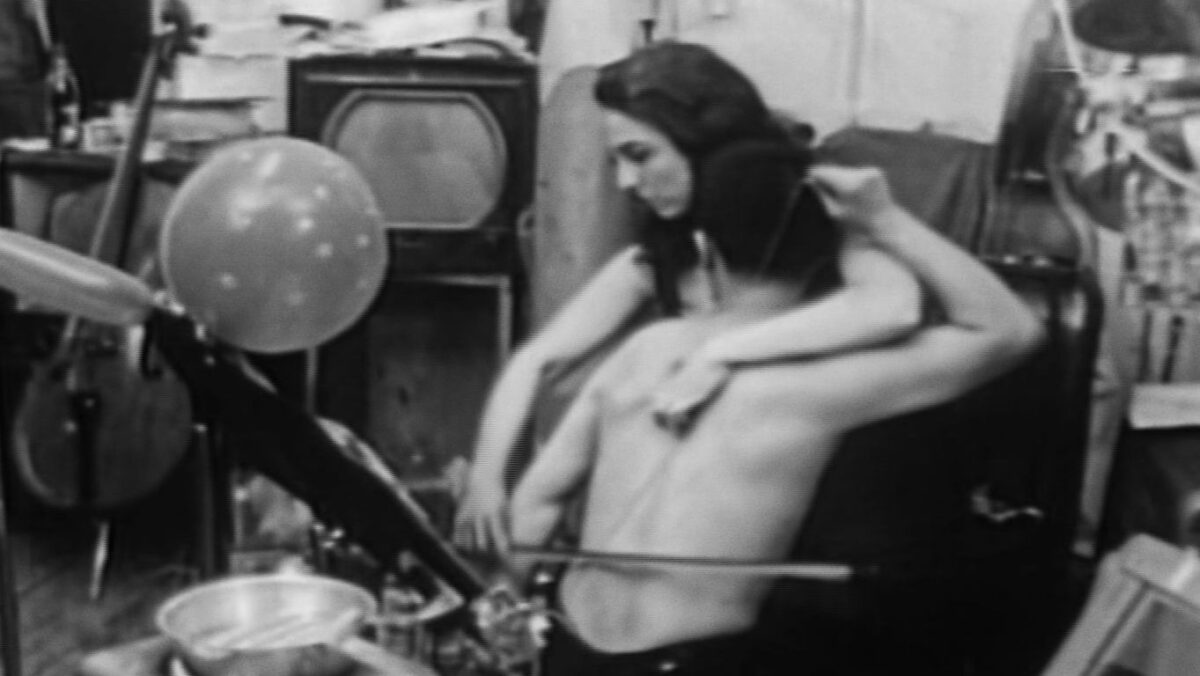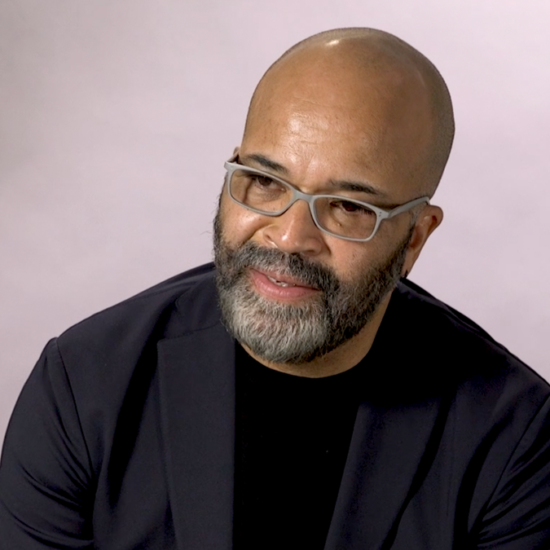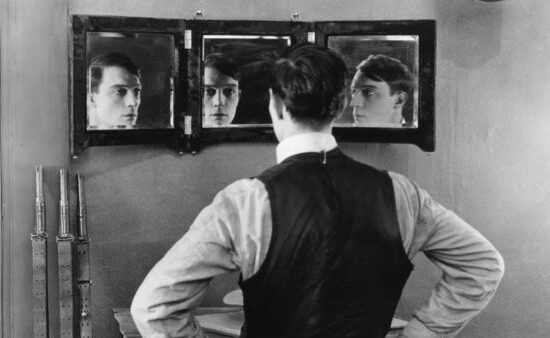
Fluxus was an international collective of avant-garde experimenters, founded in the 1960s by Lithuanian-American artist George Maciunas.
In its inception, Fluxus was defined by a shared attitude among artistic collaborators. Its purpose was to “promote a revolutionary flood and tide in art, promote living art, anti-art.”
The collective valued experimentation at its core and pushed the boundaries of acceptability – dismantling pretensions of the traditional art world and its institutions through derision, humor and destructiveness. In some ways, Fluxus is not as much remembered for its ethos (there were other anti-establishment art movements), as it is remembered for the individuals within its network.
Who was part of Fluxus?
Among the many artists who participated in Fluxus, here are five artistic figures associated with the collective:
1. John Cage
Although Maciunas is credited as its official founder, composer John Cage was equally influential in the development of Fluxus ideology. Cage’s view of Fluxus was rooted in Zen Buddhism, describing art as “a means to make one aware of one’s actual environment.” Although Fluxus began in the 1960s, Cage had already been challenging expectations within classical music composition years prior, most notably with 4’33” in 1952. One of the defining pieces of 20th century avant-garde composition, 4’33” was borne from Cage’s years of music study. At its premiere, musician David Tudor famously sat silently at a piano for four minutes and 33 seconds. In less than five minutes, Cage shook the history of classical composition – positing that musical performance was not about making music or sound, but listening.
4’33” emphasized the relationship of environment to the consumption of art – no two performances can be identical. In this experiment and others, Cage embraced chance, encouraging performers to revel in the singularity of each moment. As a leader within experimental art, Cage taught various classes at the New School for Social Research in New York City from 1957-1959. Many of his students would later participate in Fluxus, such as George Brecht, Al Hansen, Dick Higgins and Alison Knowles.
“[The] spirit of experimentation was very contagious from John Cage,” said video artist Nam June Paik.
2. Nam June Paik
Emerging from a background in classical music, Nam June Paik’s first encounter with Cage would formatively alter his view of art:
“My life began one evening in August 1958 in Darmstadt. 1957 was 1 BC (Before Cage).”
Widely regarded as “the father of video art,” Paik’s unique visions of technology and communication presaged much of our world today. Predicting that “everybody will have his own TV channel” and the inter-connected “electronic superhighway,” Paik’s innovation and philosophical explorations of our evolving relationships to technology have only grown more relevant.
In collaboration with Cage, Joseph Beuys and other Fluxus artists, Paik’s body of work went on to include large-scale video installations, performance art and global satellite projects. His work is sometimes referred to as “Intermedia,” a term coined by Fluxus founding member Dick Higgins, to describe the group’s artistic experiments. Within Fluxus, Paik grew infamous for destroying musical instruments and provocative exhibitions, many of which played on the concept of TV (Magnet TV, TV Garden, TV Cello and TV Buddha to name a few).
Paik said, “The artists are saboteurs. We are the fuse of the society, you know? So when we revolt, they know something’s wrong. . . I destroyed pianos. Next, maybe I will destroy myself.”
3. Yoko Ono
You may be surprised to learn that Yoko Ono was central to strengthening artistic ties between New York and Tokyo in the 1950s and 60s. After Ono’s first husband, Toshi Ichiyanagi, attended one of Cage’s classes at the New School, Ono began co-organizing experimental exhibitions in her loft on Chambers Street. These gatherings would serve as the genesis of Fluxus, inspiring Maciunas to raise funds for his idea of a publication dedicated to experimental art. When Ono and Ichiyanagi returned to Japan, they encouraged their artistic network to submit material to the new initiative.
The rise of mass media, economic changes and travel made it possible for artists to interact in ways they could never have before. Maciunas’ idea would evolve into more than a publication and Fluxus’ manifesto grew a global network, making it one of the first transnational movements to include Asian artists. By the time Ono returned to New York in 1964, she’d established herself as a prominent figure in Tokyo and New York’s avant-garde art scenes with her various exhibitions and concerts.
4. Shigeko Kubota
Sculptor Shigeko Kubota was introduced to Fluxus by Ono, Ichiyanagi and Paik sometime around 1964. After a disappointing critical response to her sculptures presented in Japan, Kubota accepted an invitation from Maciunas to join Fluxus in New York. She is probably most remembered for Vagina Painting – tying a dripping paintbrush to her underwear, Kubota subverted the action paintings of contemporaries like Jackson Pollock. Organizing events and dinners, Kubota became so central to Fluxus that Maciunas referred to her as its “vice president.”
On her introduction to video art, Kubota remembered, “Nam June was working in video and I said, ‘You know, I can do it, too. Shall I try?’” By the late 1960s, Paik and Kubota were actively collaborating, becoming pioneers in the emerging medium. The two were quietly married in the 1970s and continued to work together until Paik passed away in 2006.
5. Charlotte Moorman
Cellist and performance artist Charlotte Moorman was once called “the Jeanne d’Arc of new music” by composer Edgar Varese. One of Paik’s frequent collaborators, Moorman was often at the center of his explorations of the relationship between the human body and machine, such as in TV Bra for Living Sculpture and TV-Cello. However, Moorman’s willingness to use her body for art did not come without controversy. During her performance of Opera Sextronique, Moorman and Paik were arrested for ‘indecent exposure.’ Surprisingly, even within Fluxus, there were disputes regarding Moorman’s work. Several artists, including Maciunas and Cage, objected to Moorman for offering her body too easily to Paik and other men. Although Moorman and Paik continued to work together, Moorman was allegedly “blacklisted” from Fluxus by Maciunas for exact reasons unclear – although some sources say he was displeased with her Annual Avant Garde Festival of New York competing with Fluxus.
One of her collaborations with Paik includes Global Groove, originally produced by WNET’s Channel 13 in 1973 as part of its Television Laboratory – an experimental center in which Paik was artist-in-residence. In Global Groove, Moorman performed a cello duet with Alan Shulmen using a Paik-invented instrument – a cello with three monitors playing video feedback.
What happened to Fluxus?
One can formally view the end of Fluxus as 1978 when Maciunas’ funeral was celebrated as its final official event – a “Fluxfuneral.” Some say it continues. On his own interpretation of the collective, Cage said, “It was [Maciunas’] idea. But his idea of Fluxus is not necessarily another person’s idea of Fluxus. . . I don’t like organizations, and I don’t think any artist really does. And when a term gets to be an umbrella, a person who wants to remain free of organizations, moves out from under the umbrella. I’m not opposed to Fluxus, but I’m opposed to being in an institution or part of an organization.”
In Latin, the word fluxus means flowing; In English, flux describes continual change. Fluxus itself was always a little bit of a contradiction – an anti-institutional ideology teetering on the edge of being an institution itself. Whether to evolve, devolve or dissolve, it was always meant to flux.





















